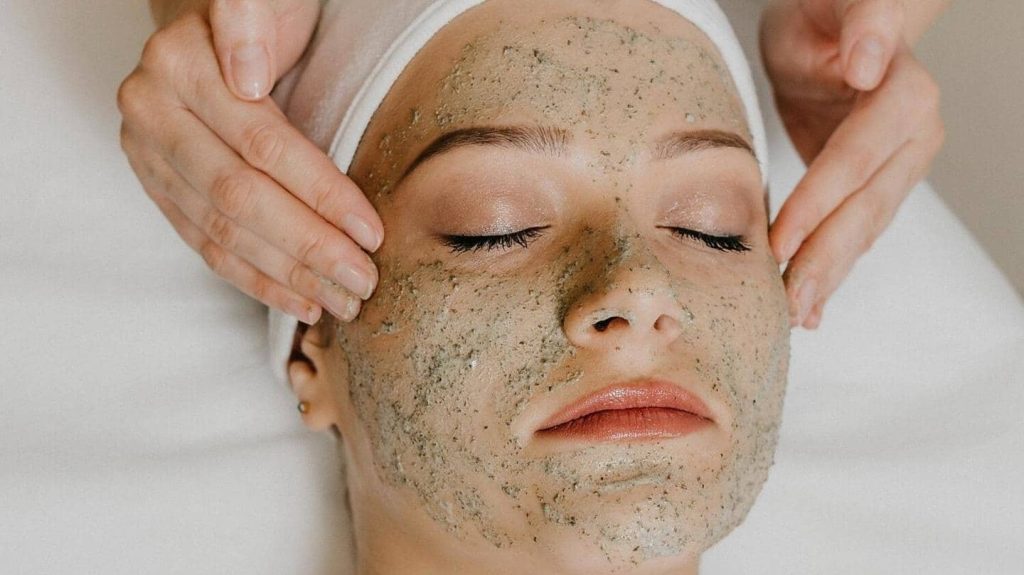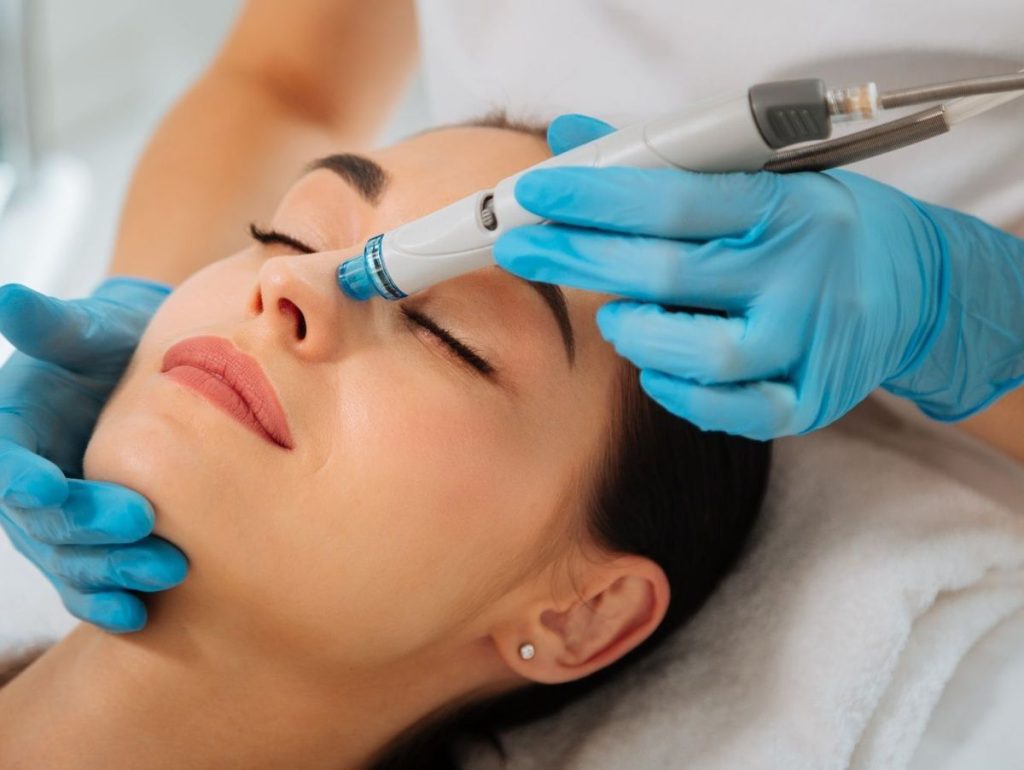Exfoliation is a word which gets thrown around a lot in the beauty industry. Some think it is something which should be done regularly while others think it is hard on the skin and should be done very infrequently. To understand the topic better, let’s discuss the skin and its phases. Skin cells start their cycle at the very bottom layer of the epidermis and slowly make their way to the surface over a period of about three weeks. At the end of this three week cycle, the skin cells tend to dry out, flatten out and are shed off the face without incident. However, sometimes, thanks to oil and dirt, the skin cells do not dry out and flake off and are, instead, stuck to the new, healthy skin cells. This is where exfoliation comes in.
There are numerous different types of exfoliation (and exfoliants), but they all have the same ultimate goal of eliminating skin cells so that newer, fresher skin can show through. The first and oldest type of exfoliants are physical exfoliants which use a rough, but not overly-abrasive, surface to do the job like is the case with exfoliation washcloths and sponges. Next there are chemical exfoliants like polyhydroxy acids which do the same thing through minor chemical reactions on the surface of the skin. There are also natural enzymes like citrus and pumpkin which are used as facial masks and peels that, similar to the chemical exfoliants, rely on (enzymatic) chemical reactions on the surface of the skin to achieve their goal of exfoliation. Let’s examine the different types of exfoliation. Finally, there is mechanical exfoliation like dermabrasion which is a more extreme form of exfoliation.
PHYSICAL EXFOLIATION
Physical exfoliation is probably the most controversial of all of the exfoliation methods simply due to the fact that a non-insignificant percentage of people who use physical exfoliation overdo it. There, for some reason, is a wide-spread belief that the harder you scrub, the better. This is actually completely false and scrubbing your face too hard for the purposes of exfoliation can actually rub the necessary outer layer off the skin and introduce tiny tears into the skin. When over-exfoliation has occurred from physical exfoliation, skin may appear rosy and shiny leading the user to believe they have done a good job. However, skin which appears like this is actually damaged and can easily dehydrate while being susceptible to painful cracks. This is sometimes referred to as an exfoliation burn. Therefore, it is recommended that, if you want to rely on physical exfoliation you should press, not rub, into moistened skin and only allow pressure which is physically comfortable.

CHEMICAL EXFOLIATION
Chemical exfoliants, of which there are numerous, use ingredients with low PH levels to loosen the bonds between cells with acids or enzymes. However, because chemical exfoliants literally weaken certain types of chemical bonds that occur in your skin, you should not do chemical exfoliation more than a couple times per week or you can actually thin your skin.
ENZYMES
When people think of the word enzymes, most people think back to biology or nutrition classes where we had learned that enzymes break down food in our stomach to aid in the digestive process. However, enzymes can also break down dead skin cells on the surface of our skin which leads to the effect of exfoliation. However, this again, is a chemical reaction and should only be performed about once a week. Also, because it can sensitize skin, you should always remember to put sunblock on when you go out after enzymatic exfoliation. The fact that enzymes may sound more natural than chemical exfoliants does not mean they are less powerful or effective.

MECHANICAL EXFOLIATION
Dermabrasion, such as microdermabrasion and hydrodermabrasion, uses mechanical instruments to loosen and vacuum off the top layer of skin. This should be done by a trained spa or medical professional, depending on the technique being used, and is generally reserved for those who want to eliminate wrinkles, acne or fine lines as opposed to those who are strictly looking for exfoliation. Dermabrasion is a more extreme form of exfoliation which penetrates much deeper into the skin and is generally only recommended to do once every three months.

CONCLUSION
While there are numerous different ways to exfoliate your skin, the one thing that they have in common is that they can have detrimental effects on your skin if you overdo them or do them incorrectly. The common attitude of thinking “more is better” is incorrect when applied to exfoliation. Exfoliation can improve the beauty of your skin and even benefit the health of your skin when done correctly and in moderation.